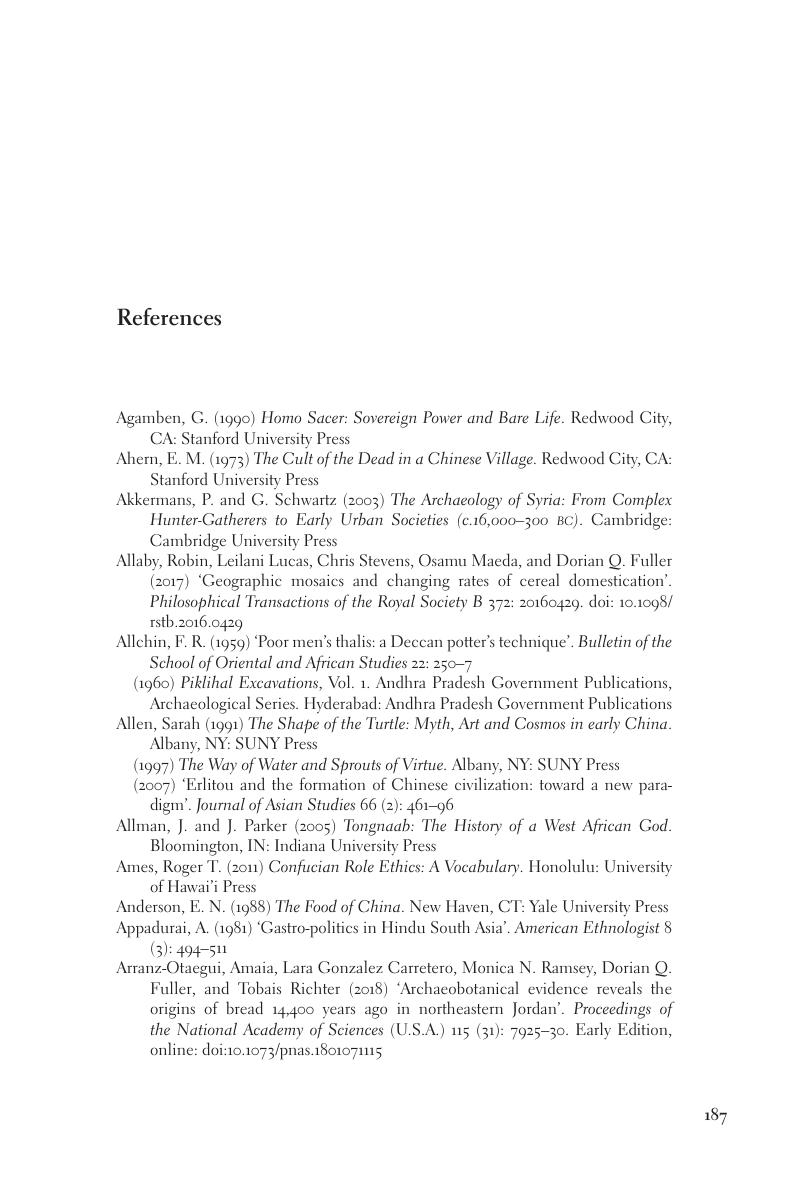Book contents
- Civilisation Recast
- Civilisation Recast
- Copyright page
- Contents
- Figures
- Introduction
- Chapter 1 Civilisation: A Critical and Constructive Review
- Chapter 2 Civilisation in This Book
- Chapter 3 Long-Term Traditions of Food, Substance, and Sacrifice: Interpreting Cultures of Ingestion in West, South, and East Asia
- Chapter 4 Neolithicities: From Africa to Eurasia and Beyond
- Chapter 5 Ancestors, Civilisation, and Hierarchy: Some Comparisons from Africa
- Chapter 6 Civilisation in China
- Chapter 7 Civilisation and the Government of ‘Civilisation’ in Contemporary China
- Conclusion
- References
- Index
- References
References
Published online by Cambridge University Press: 15 July 2019
- Civilisation Recast
- Civilisation Recast
- Copyright page
- Contents
- Figures
- Introduction
- Chapter 1 Civilisation: A Critical and Constructive Review
- Chapter 2 Civilisation in This Book
- Chapter 3 Long-Term Traditions of Food, Substance, and Sacrifice: Interpreting Cultures of Ingestion in West, South, and East Asia
- Chapter 4 Neolithicities: From Africa to Eurasia and Beyond
- Chapter 5 Ancestors, Civilisation, and Hierarchy: Some Comparisons from Africa
- Chapter 6 Civilisation in China
- Chapter 7 Civilisation and the Government of ‘Civilisation’ in Contemporary China
- Conclusion
- References
- Index
- References
Summary

- Type
- Chapter
- Information
- Civilisation RecastTheoretical and Historical Perspectives, pp. 187 - 214Publisher: Cambridge University PressPrint publication year: 2019



